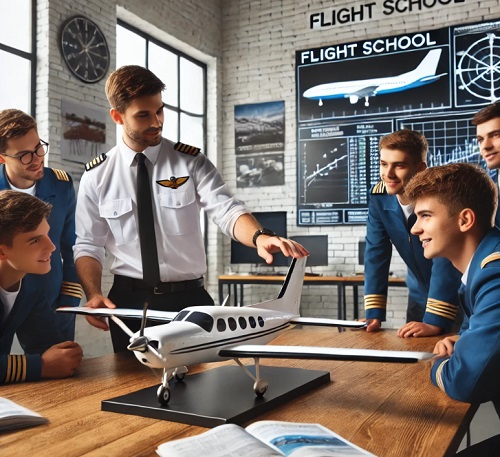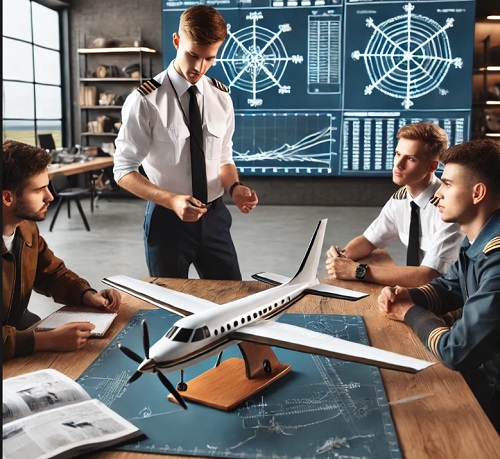The Role of Scale Models in Pilot Training & Aviation Education

Aspiring pilots undergo rigorous training that combines theory, simulation, and real-world flying experience. While full-motion flight simulators and actual cockpit time are crucial components of aviation education, one often-overlooked tool that plays a significant role in pilot training is scale aircraft models. These meticulously crafted replicas, such as museum quality aircraft models, help student pilots develop a deeper understanding of aerodynamics, aircraft design, and operational procedures before taking flight.
The Importance of Visual Learning in Aviation Education
Flight schools rely on a combination of classroom instruction, simulators, and actual flying experience to prepare students for a successful aviation career. However, visual and tactile learning tools such as vintage airplane models provide additional benefits that enhance student comprehension and retention. Unlike diagrams in textbooks or digital representations, physical scale models allow students to interact with a three-dimensional representation of an aircraft, making it easier to grasp complex aviation concepts.
Benefits of Using Scale Models in Training
By handling and observing a museum quality aircraft model, student pilots can: 1. Understand the aerodynamics of different wing configurations. 2. Study the control surfaces, such as ailerons, rudders, and elevators. 3. Learn about aircraft weight distribution and balance. 4. Gain insights into cockpit layout and instrumentation placement. 5. Visualize different landing gear mechanisms and how they function. 6. Examine engine placements and their impact on aircraft balance.How Scale Models Enhance Pilot Training
1. Pre-Flight Familiarization
Before stepping into a real aircraft, student pilots must become familiar with its structure and key components. Using scale aircraft models, instructors can demonstrate how various parts of the airplane function, including landing gear operation, engine placement, and fuel system configurations. This hands-on approach reinforces theoretical knowledge and prepares students for their first real-life cockpit experience.2. Aerodynamics and Flight Principles
Understanding aerodynamics is fundamental to safe flying. While computer-generated simulations provide a dynamic perspective, physical models offer a more intuitive way to visualize airflow over wings, lift generation, and the effects of control inputs. Flight instructors can use vintage airplane models to illustrate concepts such as stall recovery, ground effect, and drag reduction techniques. Additionally, students can analyze different wing designs, from delta wings to swept-back configurations, to understand their impact on aircraft performance.3. Cockpit Procedures and Checklist Training
New pilots must memorize pre-flight checklists, emergency procedures, and in-flight maneuvers. Custom-built scale models with removable cockpit panels help students familiarize themselves with instrument placement, switch locations, and throttle controls. This reduces cockpit confusion during actual flight training, making the transition smoother and more efficient. Students can also practice pre-takeoff, climb, cruise, and descent procedures in a structured manner.4. Emergency Scenario Demonstrations
Emergencies such as engine failure, hydraulic malfunctions, or aerodynamic stalls require quick decision-making. Airplane collectibles used in flight schools can simulate these scenarios, allowing students to visualize problem-solving techniques before encountering them in flight simulators or real aircraft. Instructors can rotate the models to show proper nose attitude, bank angles, and control inputs for various emergency responses. Additionally, case studies of real-world emergency landings can be demonstrated using scale models to illustrate key decision-making strategies.5. Air Traffic Control and Navigation Training
For pilots in instrument training, understanding airspace structure, airport layouts, and approach procedures is critical. Custom airplane models can be arranged on a table to simulate different air traffic scenarios, helping students grasp complex navigation concepts such as holding patterns, standard approach procedures, and taxiway navigation. Furthermore, students can practice IFR (Instrument Flight Rules) navigation techniques using models to map out approach sequences.6. Aircraft Restoration and Historical Education
Aviation history plays an essential role in pilot education. Flight schools and museums use museum quality aircraft models to teach students about the evolution of aviation design. By studying historic aircraft models, students can appreciate how technological advancements have shaped modern aviation. Discussions on WWII fighter planes, early commercial airliners, and modern jets provide valuable insights into aircraft engineering innovations.Bridging the Gap Between Theory and Real-World Application
Flight schools continuously seek effective teaching methods that blend theoretical instruction with practical application. Scale aircraft models serve as bridging tools that connect textbook learning with real-world aviation challenges. These models are particularly valuable for aviation schools, museums, and training academies looking to create immersive learning environments. Advantages of Using Scale Models in Flight Schools By integrating museum quality aircraft models into their training programs, aviation educators can: 1. Improve student engagement and comprehension. 2. Provide cost-effective visual learning tools. 3. Enhance situational awareness before actual flight training. 4. Preserve the legacy of aviation history while inspiring the next generation of pilots. 5. Offer a safer environment for practicing flight procedures before moving to simulators. 6. Allow students to compare aircraft designs from different eras to understand technological progression.